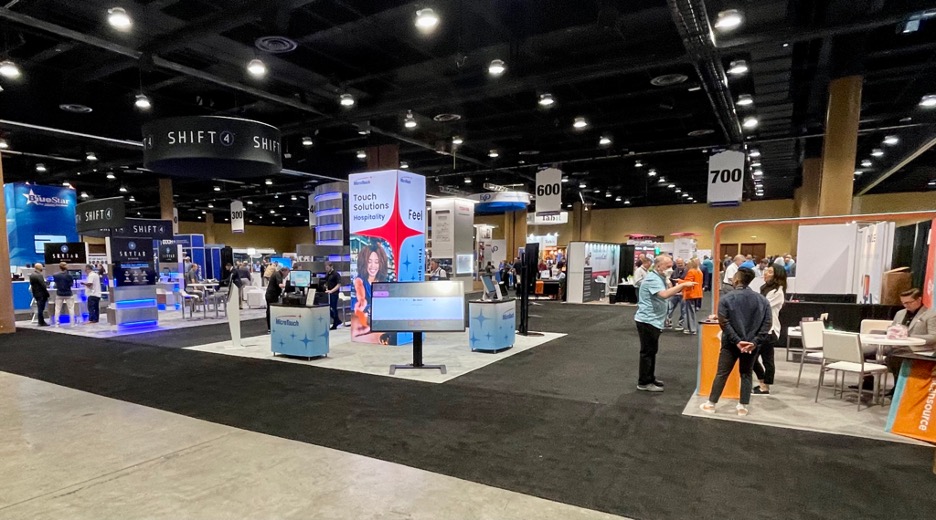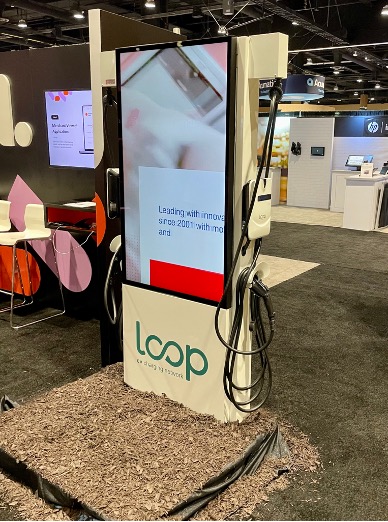About the RSPA RetailNow Show
Our team was pleased to attend this year’s RSPA RetailNow show in Orlando. RetailNow connects Value Added Resellers (VARs) with Hardware Manufactures (OEMs) and Independent Software Vendors (ISVs). The exhibition presents an excellent opportunity to connect with industry professionals and get a glimpse of future trends in Retail Technology.
This year several vendors represented segments of the retail industry like box-box retail, specialized retailers, QSR, and restaurants. There was a plethora of insight to absorb during the show, alongside many exciting innovations. So after conversing with many of our partners and vendors, we organized a few interesting trends.
The following are eleven of our key takeaways from the RSPA RetailNow show.
RetailNow Takeaways

1. Overcoming Supply Chain Woes
Supply chain issues have been a thorn in many companies and industries over the last two years. Lockdowns in Asia and ongoing shipping issues have many companies building alternate channels to ensure customers receive their products.
These are the most significant trends we noted around supply chain at RetailNow:
- Shipping via air – Companies avoid cargo containers for high-value products such as mobile Android handhelds, tablets, or computers.
- Smaller vendors have inventory – Larger vendors are committing device inventory to larger customers, giving mid-size hardware manufacturers market share in the SMB space.
- Sourcing from alternate parts of the world – Many companies are looking to source hardware and assemble devices in different parts of the world (aside from China). Much of this planning started with the enactment of the Trump-era tariffs.
In general, these changes have produced a greater availability of hardware.
2. Winter is Coming
The first rule of recession is we don’t talk about the recession! US customers aren’t buying new hardware and related solutions as fast as before. With the US GDP declining by two-quarters (inflation-adjusted), we’re in a recessionary period. After two years of government cash dumping and tax breaks, the resultant inflationary wave has finally come.
Many organizations are laying off employees and enacting cost-cutting measures as insulation for the coming recession. For software vendors like BlueFletch, we need to articulate how we can bring immediate, measurable value to customers. Remaining a viable solution during the coming recession is critical.
3. Cannabis
Cannabis consumer products like CBD, medical THC, and recreational THC are becoming more widespread across North America. The deregulation of cannabis has created a booming industry in many states. This deregulation has led to many software solutions focusing on state-mandated track and trace requirements of cannabinoid products. We suspect that the next two decades will see federal legalization of Cannabis products, which may lead to more consolidation and standardized software solutions.
4. People Still Want iOS Solutions for Business
Despite constant form factor changes and unstable development APIs, end-users continue to ask for software solutions that run on iOS. Apple’s attempts to drive away the enterprise do not waver the influx of end-users who prefer iOS devices.
Apple makes a spectacular consumer product, but in our experience, iOS products don’t translate well into the enterprise space. These shortcomings come to light by the growing number of large retailers that have ditched Apple products in favor of Android devices (Target, Lowes, Gap). We believe the lack of iOS enterprise features will push away any remaining companies over the next 3-4 years.
5. Variety of Mobile Device Vendors
Six years ago, Zebra, Honeywell (Intermec), and Datalogic were the only measurable vendors selling rugged Android data capture devices. But, with growth in consumer mobile device offerings, available component hardware for rugged devices has become substantially less expensive. Numerous, more affordable, alternative rugged devices that leverage the same internal hardware as Zebra and Honeywell have become widely available. It will be interesting which of these newer entrants into the AIDC space will be here in 10 years and which will get sucked up into consolidation mergers.
6. Electric Vehicle (EV) Charging for Profit
Petroleum prices are surging globally, and car manufacturers continue to invest in developing electric vehicles (EVs). Physical retail locations have an opportunity to turn existing parking lots into revenue-generating assets with EV charging stations. These stations typically require users to pay for charging their vehicles. Additionally, they run targeted advertising placements. There is an opportunity for retail locations in the magnitude of 10k profit per EV charger installed. Companies like Apple and Tesla could respond to this trend by introducing their offerings.

7. Cheaper Network Connection via Wireless/5G
Historically, a faster network connection in a facility required a contract with a local cable company or fiber network provider. However, these contracts were typically costly for businesses. We’re observing a recent trend of wireless backhauling with cellular companies’ 4g/5g/LTE networks. These technologies allow companies to leverage cloud technology at pop-up retail stores or locations where traditional internet connectivity is too slow.
8. A Lack of Retail Robots
Let’s face it, robots will not replace retail employees any time soon. Consumers want to engage with humans to help with questions and concerns. When it comes to having a better in-store experience, most people want to talk with another human being. Delegating jobs that rely on the strength of interpersonal communication skills to a robot is not realistic right now.
Instead, robots are starting to take on nonvisible jobs such as manufacturing, assembly, stock take, inventory, and automated delivery. There are many exciting advancements in AI technology that have a place in the enterprise. At RSPA, only two companies had robots in their booths, and both seemed to be for “flair” only. If the pandemic has taught us anything, it’s that human interaction is sacred. And while not every trip to the store may warrant a conversation with another person, having the option is comforting. The fear of impending layoffs at the hands of a robot task force is still science fiction, for now!
To read more about AI in the enterprise, consider reading our article How AI Fits Into The Enterprise or 3 Ways Artificial Intelligence Empowers Retailers To Better The Consumer Experience for more information.
9. Better Availability of Product Data
Quality inventory around data has continued to be a challenge for retailers looking to support modern omnichannel selling like BOPIS, Click&Collect, or Ship from store. It’s critical to ensure inventory data is accurate and reflective of what’s in stock. When a website incorrectly lists a product as available, customers may waste a trip to the store and associate the company with their bad experience. This lack of accurate inventory may lead to bad reviews and poor customer confidence. Look here for more omnichannel solutions.
Larger retailers solve this issue with dedicated merchandising teams who perform continuous inventory counting, sequencing, and stocking. But for smaller retailers, it’s challenging to delegate resources to ongoing inventory management. Software solutions fill this gap by integrating with printers or POS terminals to provide real-time transaction data. Smaller companies manage this data strategy better, improving online inventory transparency.
10. We're Still Printing
Someone twenty years ago may not believe how prominent printing continues to be in 2024. They might assume electronic documents would replace paper, reducing deforestation. Unfortunately, trees are still falling, and paper receipts are still king as printing remains crucial. Paper’s use cases in retail evolve with things such as BOPIS pick sheets, inventory labeling, and product tracing.
11. Integrated Payment and Mobile devices
PCI requirements usually separate operating systems and payment modules, creating a proliferation of payment pads from key vendors (e.g., Ingenico and Verifone). Technological advances allow the segmentation of payment sub-components, resulting in payment integrations within the device’s form factor. Selfishly, we look forward to more payment-capable devices as they create a need for security management tools such as our BlueFletch Enterprise toolset.
Moving Forward
After two years of doing business in what felt like a vacuum, it’s nice to get out and see new products and software solutions. RetailNow provides some great insight into future trends and exciting industry updates. We look forward to seeing more retail innovations at upcoming conferences. Especially with NRF right around the corner!
